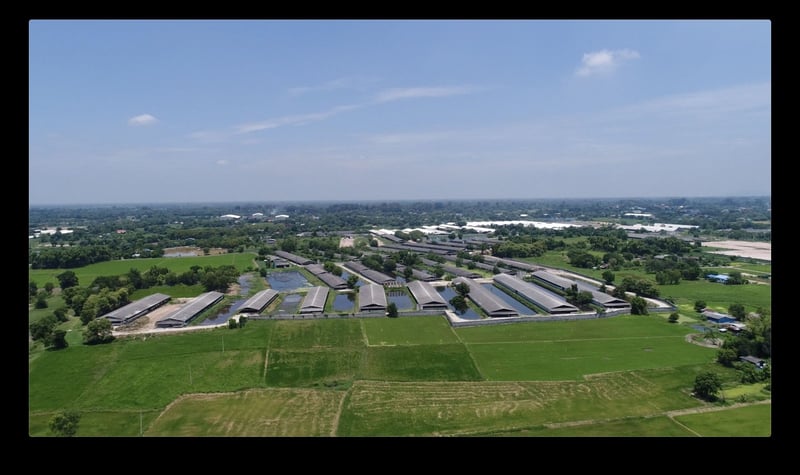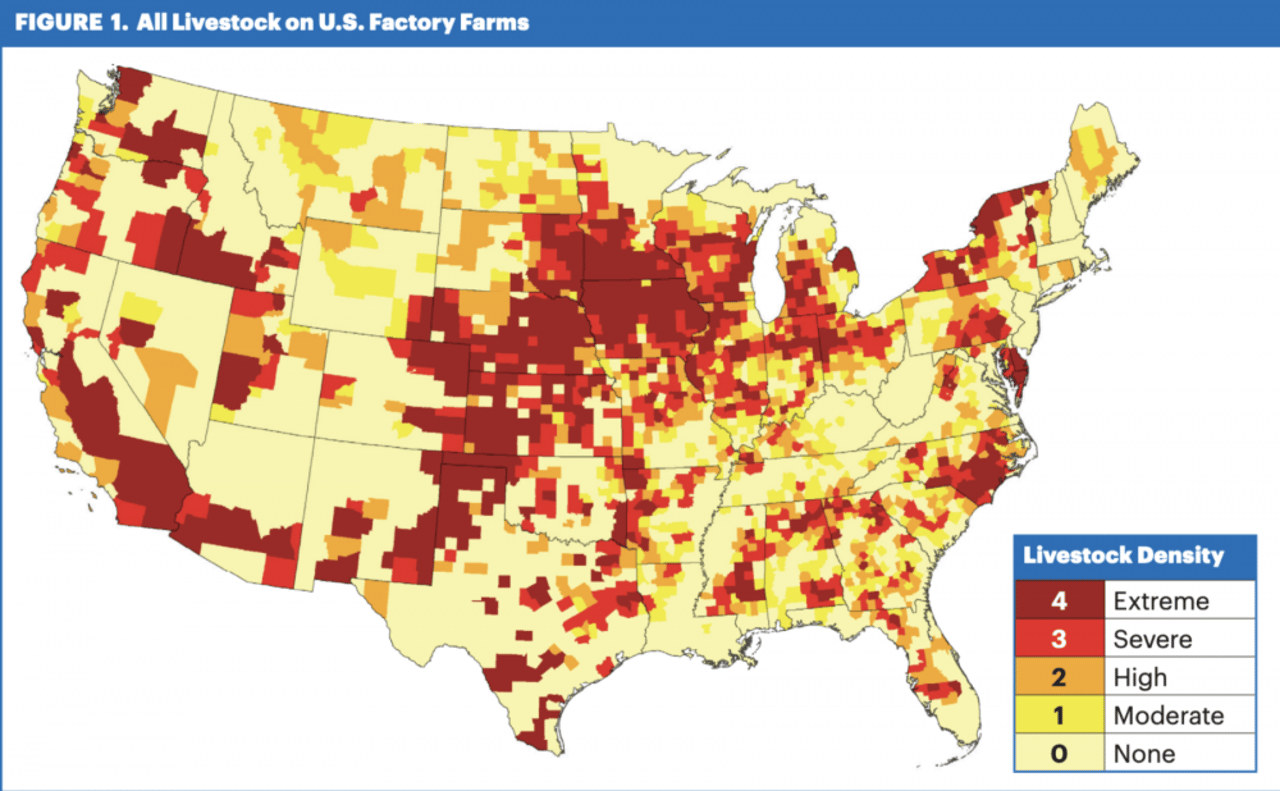
While we know factory farms exist all over the US, a deeper look into where they are located uncovers more issues than you may have realized.
Factory farms, also known as concentrated animal feeding operations (CAFOs), are an industrial method of raising farmed animals. At its core, factory farming exploits animals, people, and the planet’s resources to maximize profits. The sentient beings suffering in factory farms spend their lives in crowded, cramped, and barren conditions and are at high risk from various health and disease concerns.
While many of us may have a general awareness of the extensive reach of factory farms, we likely don’t see them directly and the agriculture industry puts a great deal of smoke and mirrors to make sure the atrocities on these farms are not visible to the public. It’s important to understand just how much of our land is dedicated to factory farming to comprehend the complications this creates.
Where are factory farms actually located?
There has been a significant rise in factory farms over the last two decades, with a dramatic shift from smaller, independent family farms, to now 99% of farmed animals in the US raised on factory farms. The map below based on a 2020 analysis of factory farm locations shows the areas with the highest density of CAFOs.
This map identifies areas of the US with a moderate-to-extreme concentration of factory farms using the USDA's definition of a “CAFO.” Areas indicated on the map as having no concentration may still have several local facilities that confine farmed animals in factory farm-like environments.
The patterns visible in this map demonstrate the reality that certain regions of the US have an alarming concentration of factory farms. These are also areas where the soil is most fertile and where US farming is generally most predominant due to climate, land availability, and regulations that favor this business model.
In recent years, the high density of factory farms in certain areas has continued to grow and pose increasing threats to the local communities and wild animals living near them. The negative impacts of factory farms particularly impact low-income and marginalized communities that tend to live near them. In 2014, a major pig producer, Smithfield, was sued by over 500 citizens in North Carolina for environmental damage and detrimental impacts on community health. North Carolina is one of the biggest pig producers in the country, as shown on the map above.
The proximity of factory farms to major waterways creates a problem as well. The toxic pesticides, fertilizers, and animal drugs used in abundance on factory farms are released into the environment during feed crop production and in the discharged waste. They leach into the soil and waterways with detrimental effects on native species, habitats, and biodiversity. Wild animals who rely on these water sources in high-concentration areas have seen severe population declines. The system has also created dead zones far downstream, like in the Gulf of Mexico, an area so toxic that no species can survive.
Factory feed crops exploit Midwest grasslands
In order to raise the massive number of animals produced on factory farms, millions of acres of land are exploited to grow feed crops, mostly corn and soy. These are industrial-scale operations, managed with high-tech machinery, that continuously encroach on wild animal habitats. About 41% of land in the US is used for livestock production, with about 33% of that dedicated to growing feed for animals. This is a severe misuse of limited natural resources and misdirection of calories that could feed humans.
How can you help?
You can help stop the devastating impacts of factory farms by supporting the Farm Systems Reform Act, a proposed bill that would place federal protections on farmed animals and help stop the expansion of factory farms. By signing our petition, you can help give sentient beings a voice and urge your legislators to support more humane food systems that treat animals with kindness and respect.
